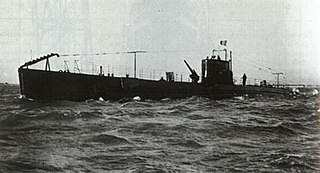The Glauco class was a pair of submarines ordered by the Portuguese government, but were taken over and completed for the Regia Marina during the 1930s. They played a minor role in the Spanish Civil War of 1936–1939 supporting the Spanish Nationalists.

The Argonauta-class submarine was the first sub-class of the 600 Series of coastal submarines built for the Regia Marina during the 1930s. Some of these boats played a minor role in the Spanish Civil War of 1936–1939 supporting the Spanish Nationalists. Of the seven boats built in this class, only a single one survived the Second World War.
Otraria was one of two Argo-class submarines ordered by the Portuguese government, but taken over and completed for the Regia Marina during the 1930s. She played a minor role in the Spanish Civil War of 1936–1939 supporting the Spanish Nationalists.
Argo was the lead ship of her class of two submarines ordered by the Portuguese government, but taken over and completed for the Regia Marina during the 1930s.
Velella was one of a pair of submarines ordered by the Portuguese government, but taken over and completed for the Regia Marina during the 1930s.
Ametista was the lead ship of her class of a dozen submarines, the second sub-class of the 600 Series of coastal submarines built for the Regia Marina during the early 1930s.
Naiade was one of a dozen Sirena-class submarines, the second sub-class of the 600 Series of coastal submarines built for the Regia Marina during the early 1930s.
Nereide was one of a dozen Sirena-class submarines, the second sub-class of the 600 Series of coastal submarines built for the Regia Marina during the early 1930s.
Rubino was one of a dozen Sirena-class submarines, the second sub-class of the 600 Series of coastal submarines built for the Regia Marina during the early 1930s.
Sirena was one of a dozen Sirena-class submarines, the second sub-class of the 600 Series of coastal submarines built for the Regia Marina during the early 1930s.
Smeraldo was one of a dozen Sirena-class submarines, the second sub-class of the 600 Series of coastal submarines built for the Regia Marina during the early 1930s.
Zaffiro was one of a dozen Sirena-class submarines, the second sub-class of the 600 Series of coastal submarines built for the Regia Marina during the early 1930s.
The Settembrini class was a pair of submarines built for the Regia Marina during the late 1920s. They played a minor role in the Spanish Civil War of 1936–1939 supporting the Spanish Nationalists.
Fratelli Bandiera was the lead ship of her class of four submarines built for the Regia Marina during the late 1920s.
Luciano Manara was one of four Bandiera-class submarines built for the Regia Marina during the late 1920s. Completed in 1929,
Ruggiero Settimo was one of two Settembrini-class submarines built for the Regia Marina during the early 1930s.
Argonauta was the lead ship of her class of seven submarines built for the Regia Marina during the early 1930s.
Fisalia was one of seven Argonauta-class submarines built for the Regia Marina during the early 1930s.
Goffredo Mameli was the lead ship of her class of four submarines built for the Regia Marina during the 1920s.
Tito Speri was one of four Mameli-class submarines built for the Regia Marina during the 1920s.
